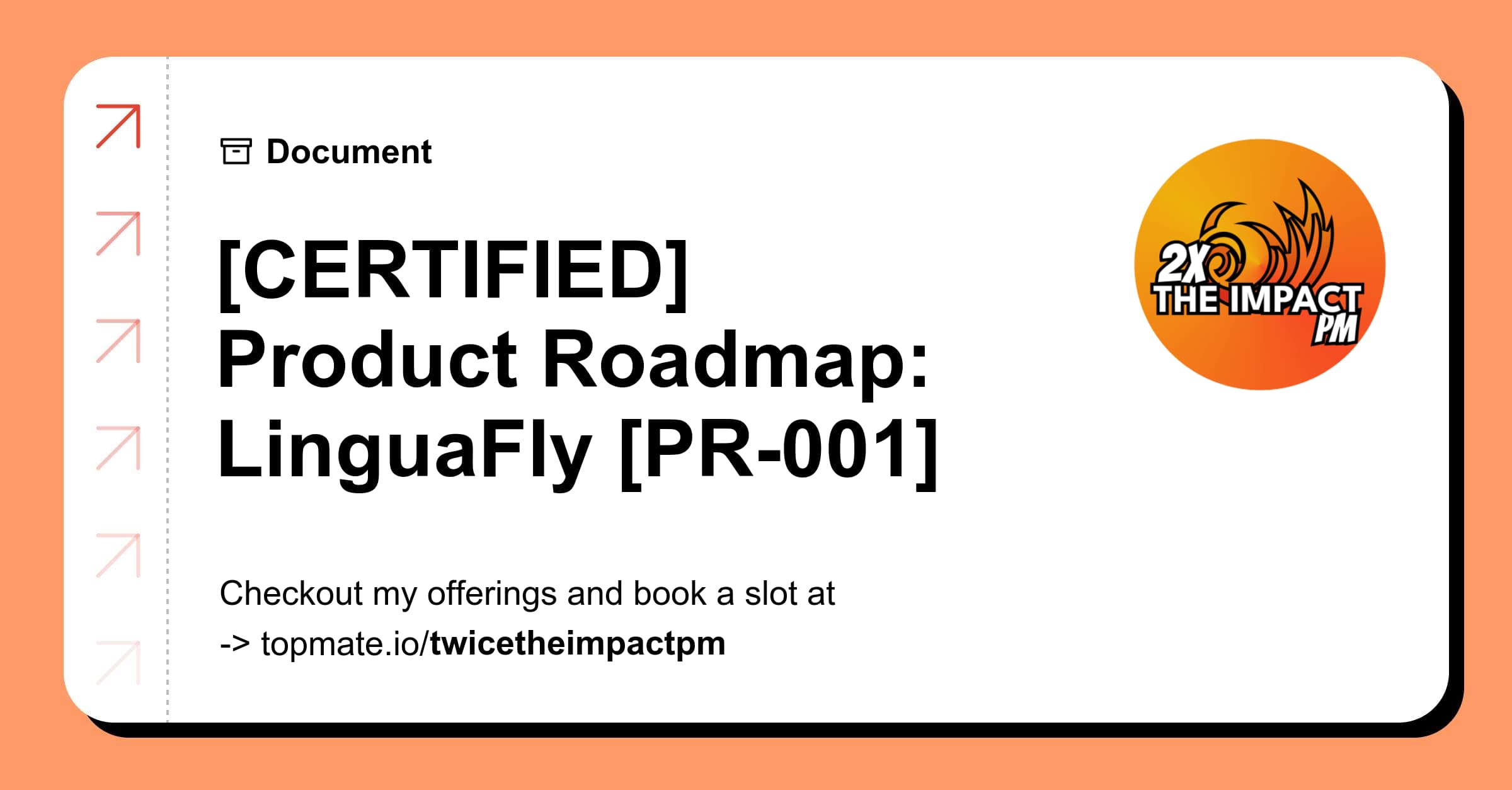- Twice the Impact PM 🔥
- Posts
- A Deep Dive into Product Lifecycle Management 🧬
A Deep Dive into Product Lifecycle Management 🧬
Understanding PLCs of MVP, New, and Mature Products 🚀

Hello Awesome PM! It’s Areesha :)
Today we’re learning about product lifecycles of different types of products!
Just like humans, products have lifecycles too.
‘Cause products are alive.
They are born, they develop, they grow, they mature, and they die.
Let’s understand the lifecycles of products in detail today.
Launched: Our First Certified Hands-On PM Project 🎉
It’s our first certified hands-on project launch! And we want to celebrate it with you 🥳!
We couldn’t express our gratitude in words for your loyalty as our subscriber ❤️
We’re giving an early bird offer until June 7th — only for you!
✨ You get 45% OFF on our certified project in the first week of launch ✨
Get it now for 👇
₹999 ₹549
Avail this offer before June 7th, 2024!
What is Product Life Cycle in Product Management?
The product lifecycle (PLC) refers to the journey a product takes from its introduction to consumers (conception) to its eventual removal from the market (sunset).
It helps product managers understand the overall trends and challenges a product will face at each stage. 🤔
The Stages of Product Lifecycle Management 🚲
There are typically five stages in the traditional product lifecycle model.

Source: Intuendi
Development
This is where the initial product idea is born. Product managers conduct market research, identify customer needs, and define the product's features and functionalities. Prototyping and testing happen here to ensure the product aligns with market demands.
Product Manager’s Role
A Product Manager (PM) in the development stage is a jack-of-all-trades. They craft the product vision, prioritize features, and ensure development stays on track. They champion user needs through research and feedback while keeping everyone aligned.
Finally, they validate the product's direction with prototypes and testing, laying the foundation for a successful launch.
Introduction
The product hits the market for the first time. This stage involves creating awareness, generating excitement, and establishing a distribution network. Marketing efforts are intense, and product managers closely monitor customer feedback to identify early issues.
Product Manager’s Role
The PM is responsible for building awareness, driving adoption, and gathering early user feedback. This involves running marketing campaigns over social media, the web, and other platforms.
Growth
If the introduction is successful, the product enters the growth phase. Sales increase, brand recognition builds, and the product establishes itself in the market.
Product Manager’s Role
The PM is responsible for scaling operations, optimizing sales channels, and potentially entering new markets. This involves refining marketing strategies such as targeting focused interests and demographics, expanding from offline to online business practices, etc.
Maturity
This is the peak stage, where the product faces established competition and the market becomes saturated. Product managers concentrate on maintaining market share, maximizing profitability, and potentially introducing product improvements or line extensions to stay relevant.
Product Manager’s Role
The PM tries to bring smarter enhancements to the product like AI-based features, optimizing production cost, high maintenance of customer satisfaction, and more.
Decline
Eventually, sales decline due to new technologies, changing customer preferences, or increased competition.
Product Manager’s Role
The PM is responsible for developing an exit strategy, harvesting profits, or exploring product revitalization options. This involves giving heavy discounts and clearing out the stock or harvesting maximum profits (digital product) as sales begin to slow down.
Hottest on TTIPM 🔥
PLCs of MVPs, New, and Mature Products 💪
|
MVP (Minimum Viable Product)
An MVP is a basic version of a product with just enough features to validate a core idea and gather early user feedback. Due to its limited feature set, the PLC for an MVP is often condensed:
Development & Introduction (Combined): Here, the focus is on getting the MVP into the hands of users quickly. Marketing might be minimal, relying on targeted channels to reach early adopters. Gathering user feedback is crucial at this stage.
Growth (Optional): Based on user feedback, the MVP may evolve into a full-fledged product and enter a traditional growth stage, with increased marketing and sales efforts.
Maturity & Decline (Unlikely): Since MVPs are meant for early validation, they typically don't reach a maturity or decline stage. They either evolve into full products or are discontinued if the core idea isn't validated.
New Products
New products go through the full PLC stages:
Development: Extensive market research, competitor analysis, and feature definition happen here. Prototyping and testing ensure the product meets market needs.
Introduction: A well-defined GTM (Go-To-Market) strategy is launched to create awareness, build excitement, and establish distribution channels. Close attention is paid to initial sales and customer feedback.
Growth: The focus is on scaling operations, optimizing marketing and sales funnels, and potentially entering new markets to maximize customer acquisition.
Maturity: The product faces established competition. Strategies concentrate on maintaining market share, maximizing profitability, and potentially introducing product improvements or line extensions.
Decline: Sales begin to slow due to various factors. The company may decide to phase out the product, harvest remaining profits, or explore revitalization strategies.
Mature Products
Mature products are well-established in the market:
Maturity: The primary focus is on maintaining market share and profitability. Product managers may implement cost-saving measures or introduce minor improvements to stay relevant.
Decline (Gradual): The decline for mature products is often slower than for new products. Strategies might involve milking remaining profits, exploring niche markets, or offering extended support to loyal customers. Eventually, the product may be phased out.
Product Meme of the Day 🤣

That’s all for today !
Stay tuned for some freshly baked PM tips, strategies, insights, weekly Q/A digests, and more right into your inbox!🚀
Cya!
Author ❤️
Connect with us on LinkedIn:



Reply